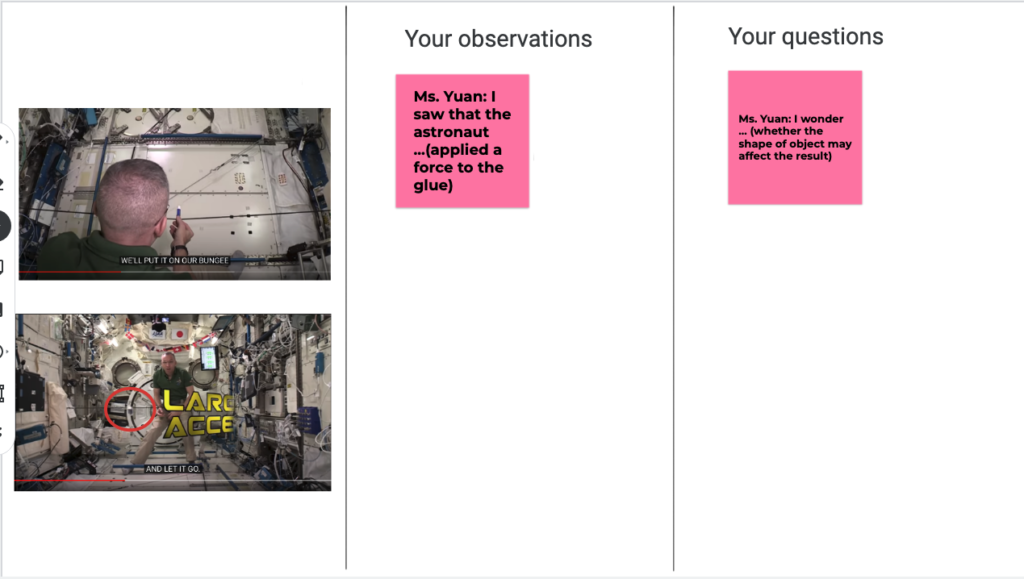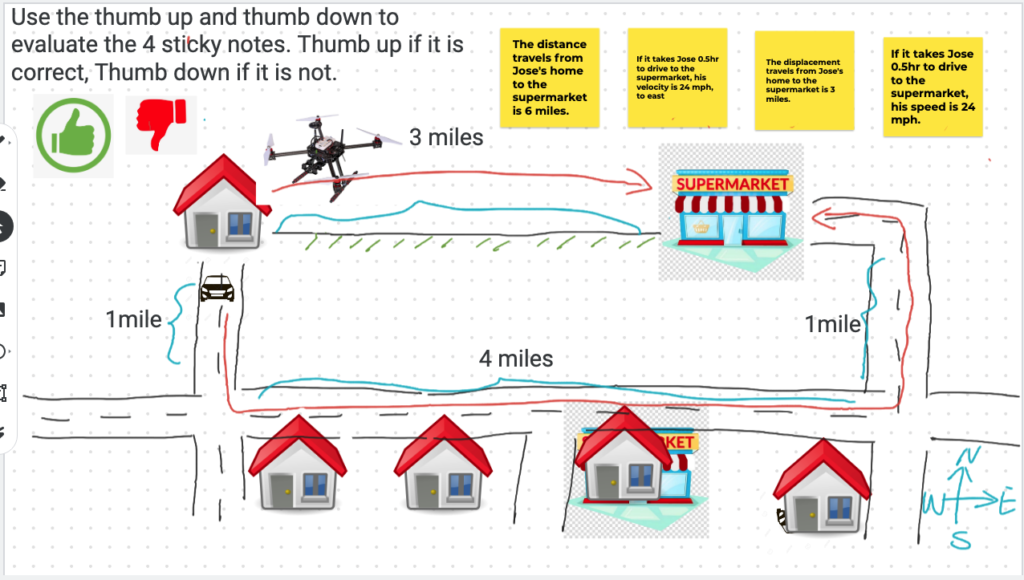Redshift and the Expanding Universe
big idea
Redshift is a piece of astronomical evidence that supports the Big Bang Theory.
Learning Objective
Students will be able to (SWABT) write a response to compare Redshift/Blueshift with other focal concepts ( frequency, wavelength) using a Frayer Graphic Organizer based on the online reading material.
Students will be able to (SWABT) create an explanation in a written response of the Big Band Theory by analyzing the explanation and evidence from an explanatory scientific article
NGSS Standard
HS-ESS1-2: Construct an explanation of the Big Bang Theory based on astronomical evidence, motion of distant galaxies, and composition of matter in the universe.
HS-PS4-5: Communicate technical information about how some technological devices use the principles of wave behavior and wave interactions with matter to transmit and capture information and energy.
Develop Understanding Through Reading

model Read-aloud

Deepen the understanding by comparing concepts using a frayer-model graphical organizer

assessment
Frayer Model Graphic Organizer – The teacher will grade the organizer by completion, mark out the misinformation and identify the potential learning opportunities from the student work.
An Exit Slip: Students will write an exit slip to explain the relationship between redshift and the Big Band Theory, and at least one question.
Bloom’s taxonomy applied in the activity
Wave-Particle Duality of Light
Big Idea
Light exhibits the properties of wave and particle.
NGSS STANDARD
HS-PS4-3: Evaluate the claims, evidence, and reasoning behind the idea that electromagnetic radiation can be described either by wave model or a particle model, and that for some situations one model is more useful than the other.
Start the lesson with an overarching question(puzzlement):
How do the wave model and particle model explain the wave behaviors?
How do scientists debate and argue about the nature of the light with the discovery of evidence?
Develop Understanding through Video clips
comprehend wave-particle duality in small groups
I divided the whole class into six different groups. Each group would answer one text-based(video) question and one open-ended question. They would also pick a present to prepare for a whole group presentation on behalf of the team.
Group 1:
- Is light a particle or a wave? What did the video say?
- How would you the toy car and flashlight activity to explain the wave model? (In the previous lesson, we did an activity to compare and contrast the similarities and differences between the scenario when two cars encountered each other and the scenario when two beams of light met each other.)
Group 2:
- What was the phenomenon that Newton successfully explained using the claim that light was a corpuscle?
- How would you use Newton’s theory to explain reflection?
Group 3:
- What evidence disproved Newton’s argument and resulted in a wave model of light?
Group 4:
- How did the scientists in the early 20th century explain the phenomenon that when you shine light on a metal, the light transfers energy to the atoms in the metal in discrete packets?
- How could you paraphrase it if you describe it to your parents? (Can be in Spanish)
Group 5:
- Why did the presenter say, “in science, even geniuses sometimes get things wrong?”
- If you had a chance to ask a question to Newton, what would you ask?
Group 6:
- Why do you think it took about a century before some scientists successfully challenged Newton’s theory?
- What are some measures that we could take to improve the process today?
exit ticket
3-2-1 Exit ticket:
3 – things you learned from other groups’ presentation
2 – things you wanted to learn more about
1 – question you would like to explore more
How does this literacy lesson fit in the 5e model?
I used this lesson as an ENGAGING activity in the 5E model. Students gained an initial impression of the wave model and the particle model. Then, the students would EXPLORE simulations and collect data on wave interference. In the EXPLAIN phase, students would conclude the superposition principle of waves by comparing the behaviors of constructive and destructive interferences. We did not have the time to enact the ELABORATE phase due to school closure, but I envision that students may apply the principles to explain engineering designs such as noise-canceling headsets and create brochures to help their communities to understand the physics behind these devices as their final EVALUATION.
BLOOM’S TAXONOMY APPLIED IN THE ACTIVITY
Newton’s 2nd Law of Motion
Learning Task: analyze the video clip by writing observations and asking questions
General Graphic Organizer to support group activity

I found in my teaching practices that proving such graphic organizers with list of tasks will improve the quality of the talk in small breakout rooms, especially in virtual classrooms.
Scaffolding ELs and students with special learning needs

In addition to the guiding questions, I selected several snapshots from the video for the students to focus on. I also provided sentence starters for the students to learn to organize their language.
Not the end
By the end of the lesson series, we revisited the video and rewrote the observations and claims here using specific academic vocabulary.

Disaggregate instruction pedagogy
I was inspired by the disaggregated instruction pedagogy proposed in Science in the city by Dr. Brown when designing this learning activity. I tried to provide opportunities for our students to talk about the phenomenon using their own words, build up the understanding of physics concepts through their own ‘language,’ and allow them to practice the academic language after mastering the conceptual understanding.
Sound waves
Big Idea
Sound is a longitudinal wave.
Start the lesson with an overarching question(puzzlement):
How does the hearing system work?
Develop vocabulary through Reading
Learn to paraphrase the article

Students were supposed to read the short article in pairs and paraphrase the article into bullet points.
Practice Problems – Take-home project
Make your own instrument
Vector Analysis
Big Idea
Vectors are quantities with both magnitudes(sizes) and direction. Scalars are quantities with only magnitudes(sizes).
Start the lesson with an overarching question(puzzlement):
Ms. Yuan starts from WAPHS and she drives for 10 miles on the I10 freeway, where is she now?
Develop vocabulary through real-world mission

Summarize Vocabs into Tables/Graphic Organizers

Practice Problems


Supporting Materials
Phet Simulation
Archery Mini-games
Proportionalities
Hands-on Activities
Learning two types of proportionalities


Capstone Project – Integrating Animation in Physics
Problem of Practice
How to promote creativity in a remote classroom by using technology? How to encourage students to discover the connections and applications of content knowledge in daily activities?
Rossier Mission alignment
- Improve learning opportunities and outcomes by engaging students in higher-order thinkings that involves creativity and critical thinking
- Create a short animation by applying the knowledge of motion and forces
- Evaluate the commercial animations and degree of reality by examining the physics behind the motion
Address disparities that affect historically marginalized groups by emerging the students in high-tech low-cost engineering projects
- Value the student’s choices and voices of project ideas
- Using student creations to overcome the technology gaps that are complicated by the remote learning environment
- Engage students in authentic experiences that foster college and career readiness
Peer-reviewed Research papers and connections
Chai, G. (2011). Physics for Animation Artists. The Physics Teacher, 49(8), 478–480. https://doi.org/10.1119/1.3651727
“Unfortunately, at present there is little overlap between art and science in the typical high school or college curriculum. This article describes our experience in bridging this gap at San Jose State University, with the hope that readers will find ideas that can be used in their own schools.”
Nearly two-thirds of the high school students disagreed with the statement, “The subject of physics has little relation to what I experience in the real world” and that increased to 96% for graduating college seniors. For both groups, about 85% of these art students agreed with the statement, “Nearly everyone is capable of understanding physics if they work at it.” One student from Art/Physics 123 wrote, “I love how the class puts a rationalization to the physical world. It gives me extra ways to understand things when I animate. Allowing me to make things more convincing or by informing myself. I can make decisions on how I want something to look.”
Ryu, Z. (2020). Fluid Mechanics Education Using Japanese Anime: Examples from “Castle in the Sky” by Hayao Miyazaki. The Physics Teacher, 58(4), 230–233. https://doi.org/10.1119/1.5145464
Bringing visual pop culture into the classroom can help to create a common experience among students that can then be used as an anchor for learning key concepts while connecting with students’ interests and increasing engagement.2 Animation can be useful for teaching physics, because although animation generally reflects reality, it is less constrained by reality than is live-action media, and this potential for separation from reality provides opportunities to test the extent to which principles of physics are bent in the “world” of the animated characters.
Action Plan
- Animation Background Survey
- Introduction to Animation – History of Animation
- Rank the most Physics realistic animation activity
- Discussion: Do animations need to follow physics principles? If yes, why? If not, why not? If in between, tell us where is the best?
- Student work [Check out resources]
- Create (Modify) the program to simulate the projectile motion of a kick
- Extra challenge: simulate the ball bouncing up and forward when hitting the ground
- Evaluate a scene (or a clip) in an animation or a movie and determine whether the motions of the characters follow the physics principles. If not, explain what the real one should be like. The student should also evaluate whether the unrealistic scene is a successful artistic design.
- Create (Modify) the program to simulate the projectile motion of a kick
- Post survey
Data Analysis
- Concept of “Time” – every Physics teacher struggles, but students believe it is most important!
- “Common experiences” -20% more submission than motion writing homework, and incorporating academic vocabularies in the writing
- Higher average grades in solving word problems
- Best moment – “I like your animation lesson!”
- Most of the students were able to identify unrealistic animations but struggled to find the most accurate one in Physics.
- Students who need additional instructional support did not participate in the activities much.
Conclusions
- Animations and motion movies provide a visual and real-world context for students to understand complex word problems
- We could learn our students better in the authentic problem-solving context. Most of the students were willing to share their opinions and took risks to solve complex problems when it came to their familiar topics. It especially worked for medium performing students. However, pop culture may become a ‘cultural tax’ for students who are not familiar with them.
- Opportunities to pre-assess the student background knowledge and anchoring phenomenon to create the storyline
- Future studies: How could we approach the students who think such activities are ‘extra work?’

